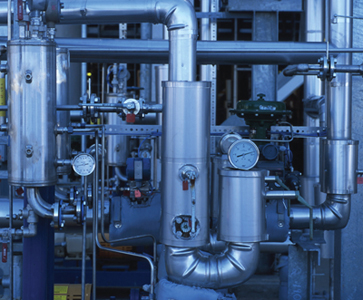 “Congratulations, you have been selected to be a part of the team! Your starting date will be….”
“Congratulations, you have been selected to be a part of the team! Your starting date will be….”
There are no sweeter words than these that I’ve heard in the eight months I scratched and clawed, typed, copied and pasted my instrument and electrical technician resume and work applications day after day. Of course, with some breaks in between as I focused on school, I prepped myself to get back into the workforce. After getting settled in, signing paperwork, and completing training modules, it is finally time to get moving!
One word came to mind as I put on my hard hat and safety goggles after completing my training modules: Planning. If you fail to plan, plan to fail.
As I start my day, I go into my emails and check to see what is lined up for the day. Whether it be PMs (preventative maintenance), specific projects, such as replacing a valve, or completing company training modules, the day starts off by planning. Once I get a vision on how my day is going to be, my team and I then head over to the daily safety meeting. Here we discuss different safety hazards that may affect us that day or what has happened at other sites. We reiterate safety topics to ensure that we don’t forget the basics: Ladder safety, clean work area, watching for slip hazards, and electrical safety, just to name a few. Finally, before we head out, we discuss the day’s work schedule.
Every day is different. Some daily tasks include troubleshooting electrical circuits, calibrating a valve, and preventative maintenance on various valves and analyzers. Sometimes we have to install new equipment and have to rewire the existing electrical wires so that we can incorporate the new equipment with the old. Last month, we installed a new security camera system in one of the buildings. Last week, we assisted another company with a new A/C unit installation by adding new conduit (galvanized pipes) and wiring it properly. This week, I will be working with analyzer instruments, which are used to ensure we are producing the best quality products.
Just like any other job, before I get started on a project, I need check to see if I have all the proper materials before getting started. Proper PPE (personal protective equipment), tools, parts, etc. I’d hate to be working on a platform high off the ground and realize that I forgot to bring tools or materials up with me. Sometimes I have to go off site to purchase the parts I need to get the job done.
This line of work has the same concepts as most other jobs: planning, executing, and adapting. It’s just a different environment. Following procedure is a very integral part of the day. Missteps can make a difference between life and death. Forgetting to shut off a valve, not locking out and tagging out, or not checking my surroundings can make or ruin my day. There are so many different job hazards to watch for. That is why we follow procedures to ensure that these hazards are kept at bay, and so that we may be able to go home to our families the exact same way we came in. Before we start working on anything on the site, we meet with other supervisors or operators to discuss the task, safety hazards, and what tools we’ll be using, and then we get assigned a work permit. Once the work is done, we go turn in the permit and communicate with the permit issuer that the work was either completed or left for another day.
Reflecting on all the different tasks I have been assigned so far, I think to myself, “Man, I sure have come a long way from stocking shelves, selling TV’s, and running a register.” Now I’m working on platforms 100 to 200 feet off the ground, working on motors, using various instruments, and troubleshooting electrical equipment. Leaving retail for the industrial construction field was one of the best decisions I’ve ever made.


